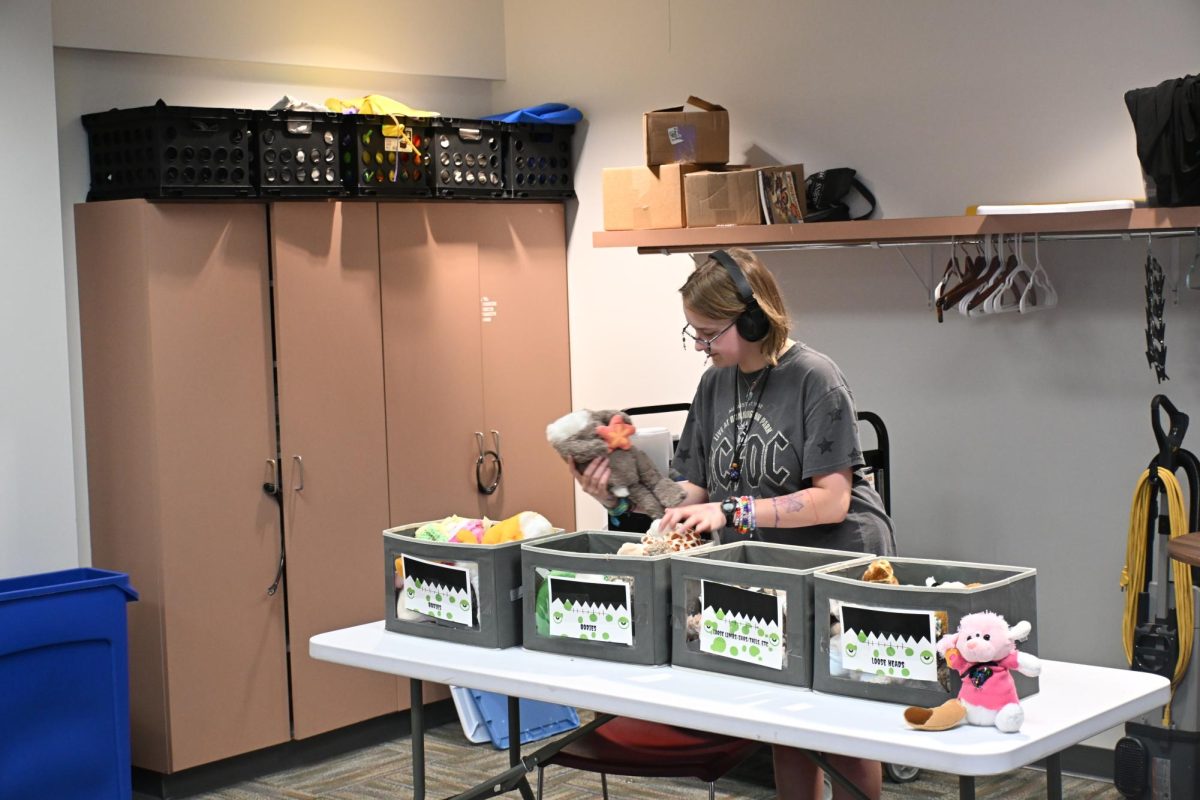The Battle Within
Area students struggle with autoimmune disorders
Freedom Robbins performs with the concert band in February 2022 at the Norwalk Performing Arts Center. Robbins suffers from Hypermobile Ehlers-Danlos Syndrome (HEDS).
January 8, 2023
Imagine living every day in constant pain. Your own body turning against you, making everyday problems into intense struggles. Affected by an invisible disease that some people even call fake. Living with an autoimmune disorder is no easy feat, according to metro area high school student Cordelia Fluharty and Norwalk graduate Freedom Robbins.
Many people struggle with autoimmune disorders, and high school students are not an exception. These can affect all aspects of a person’s life can be impacted by these disorders. Autoimmune disorders are characterized by a person’s own immune system attacking their own body.
Cordelia Fluharty was diagnosed with Mixed Connective Tissue Disorder (MCTD). This is an autoimmune disorder that targets connective tissues in joints around the body. This can cause a lot of pain in people affected by this disorder. As such, many modifications have to be made to accommodate this.
“Lots of modifications; typing notes instead of writing them, longer passing periods, and an elevator pass,” Fluharty said .
Freedom Robbins was diagnosed with Hypermobile Ehlers-Danlos Syndrome (HEDS). This is one of a collection of syndromes that can seriously affect people. Similar to MCTD, these target the connective tissues in the body.
“Connective tissue makes up most of the body,” Robbins said . “If the connective tissue doesn’t work, your body doesn’t work,” she said.
HEDS causes your skin to be very fragile, and even slows down how fast it can heal.
“More likely to have pathogens enter through the skin,” Robbins said.
Because of this, people with HEDS get sick quite often.
“One year I was sick 12 times, once a month on the dot,” Robbins said.
Many autoimmune disorders have no cure, but the symptoms can often be treated with medication.
“Lots of medications,” Fluharty said. “I’m on five now just for this.”
In addition to medications, physical therapy can also be beneficial in some cases. Fluharty said that physical therapy has helped her.
“Doing squats, jumping, and walking on a treadmill with weights on my ankles,” Fluharty said .
Medication and physical therapy can assist, but do not always solve the problem completely. Due to frequent injuries, sufferers of HEDS may need to have operations or surgeries to assist them. All of the EDS group tend to get worse as the affected get older, and this often leads to mental health issues on top of physical health issues.
“With EDS you know it’s not going to get better realistically, which can affect your mental health,” Robbins said.
Many of these disorders do not have any outward signs, and it may be hard to tell if someone has one without asking. In the case of MCTD, the severity of symptoms may vary from day to day. This means many people might doubt the authenticity of people who suffer from this disorder.
“One of the most frustrating things about MCTD is that no one believes you,” Fluharty said.
With reduced life expectancies, and constantly living in pain, mental health problems are often common in those affected by autoimmune disorders. However, hope still remains nonetheless.
Fluharty said that many people are diagnosed much later in life, and the response is often delayed and ineffective.
“I’m one of the youngest cases of this specifically,” she said
Many of the EDS group have significantly reduced life expectancies. This, in tandem with little research, leads to much uncertainty with the people affected.
“Scary, because you don’t know what the future holds,” Robbins said.
Robbins said living with an autoimmune disorder can completely change your perception of life and death. Despite this, hope still endures for many people affected by these disorders. She said that while some days might feel impossible, many are stronger than they believe.
“It is going to get worse, but you still have a life to live,” she said.

















